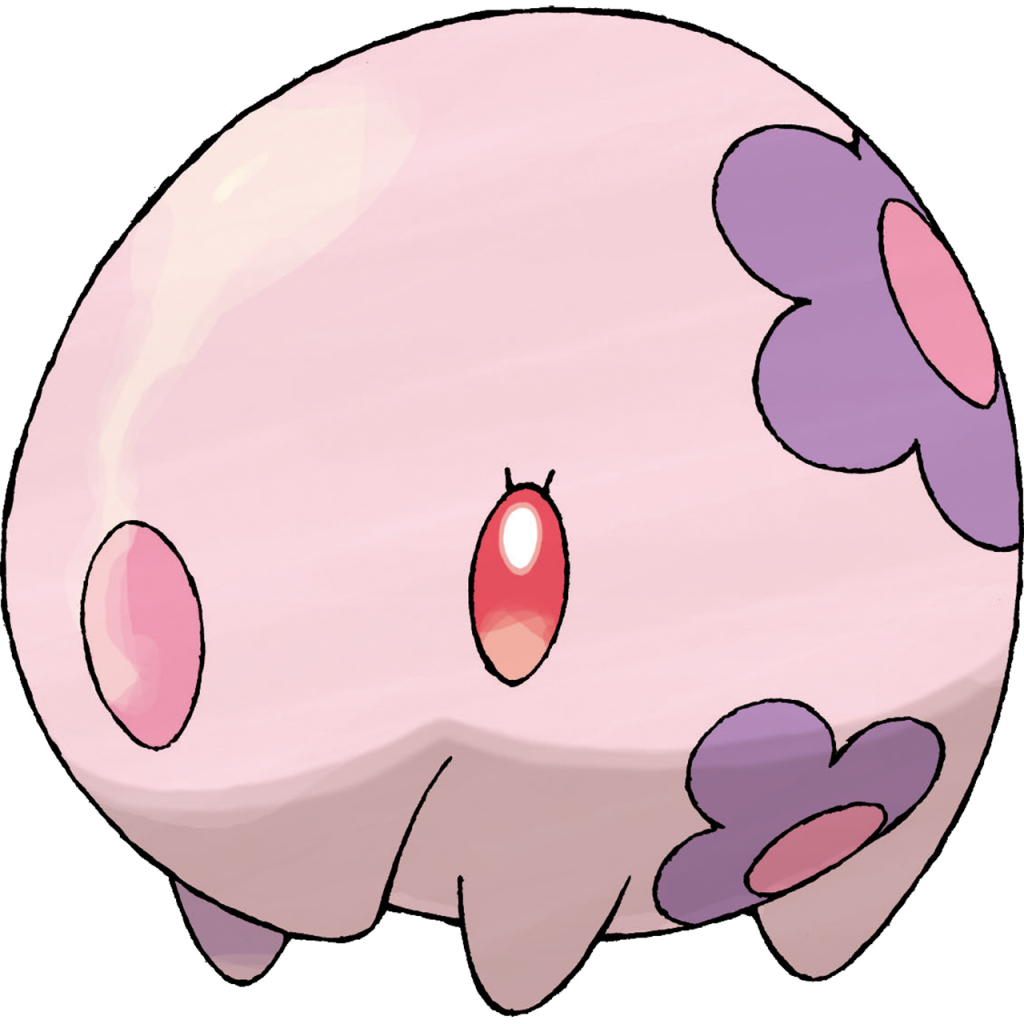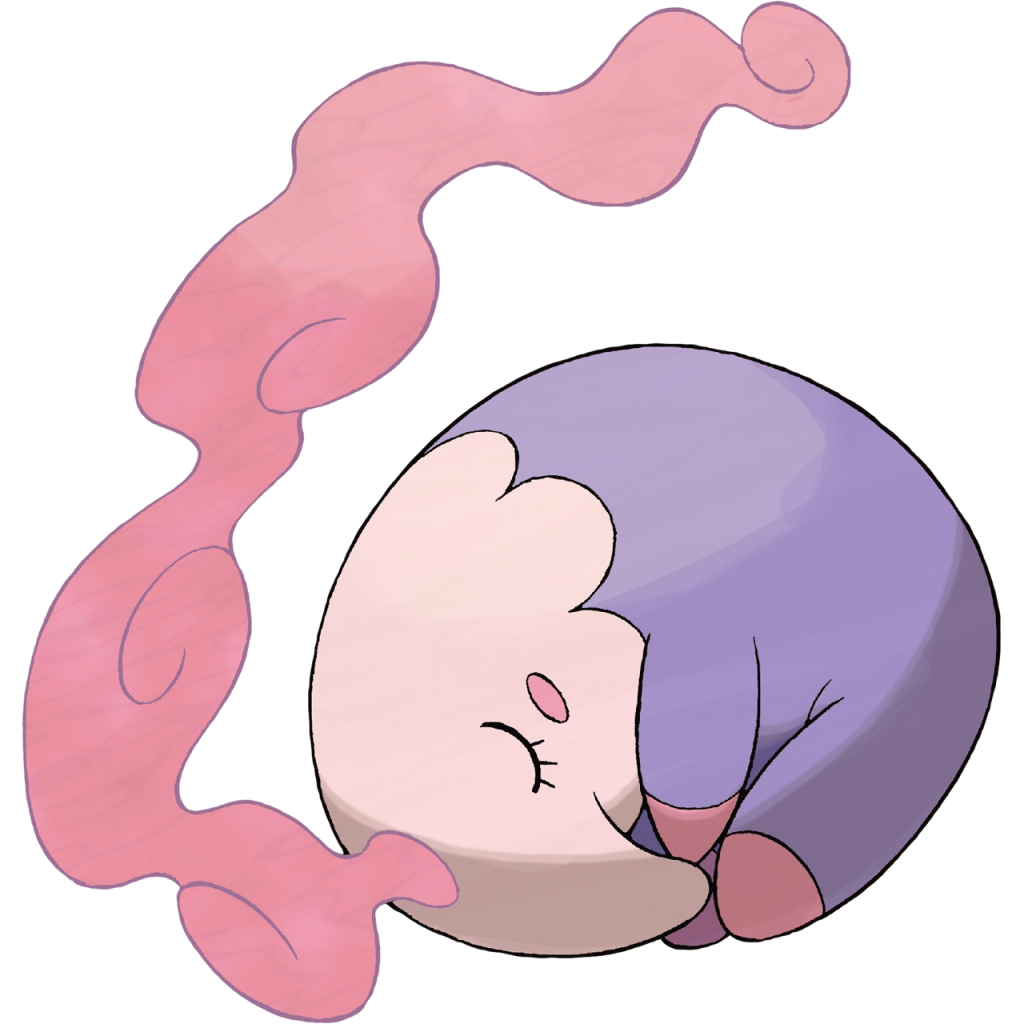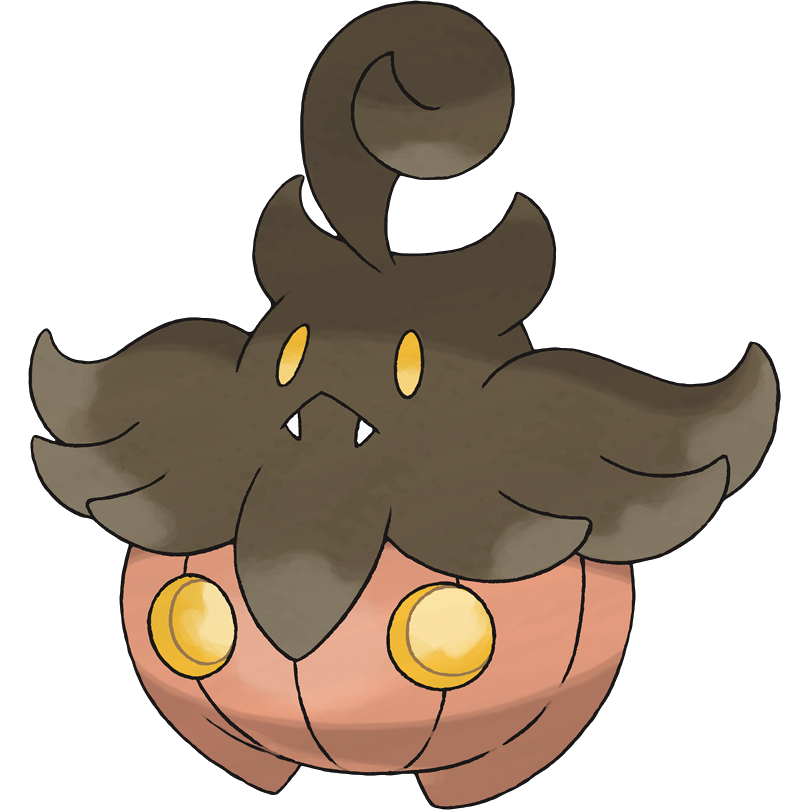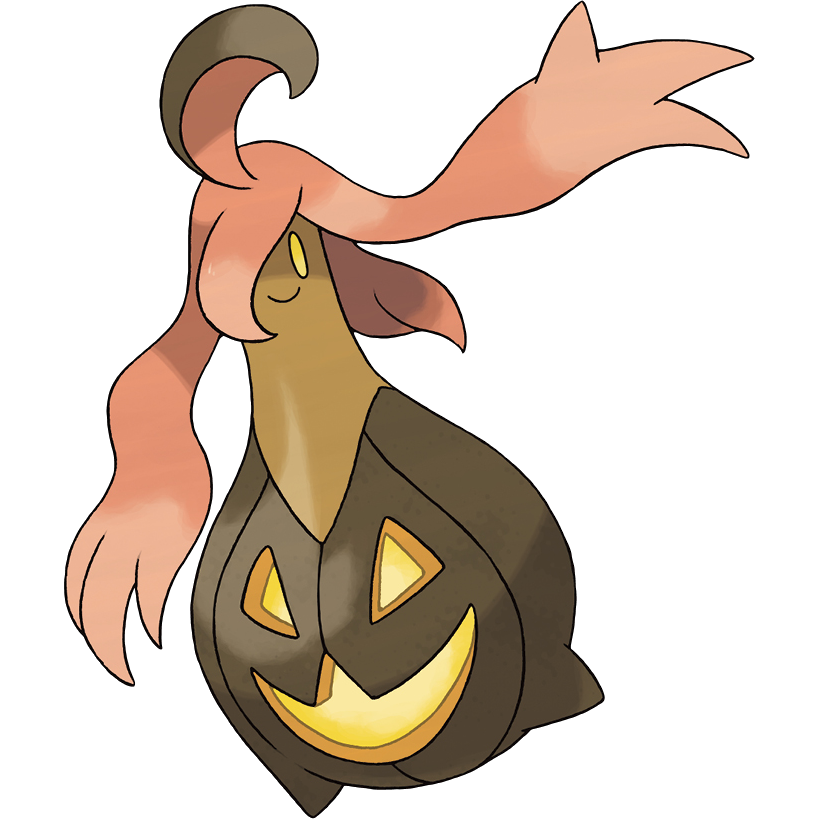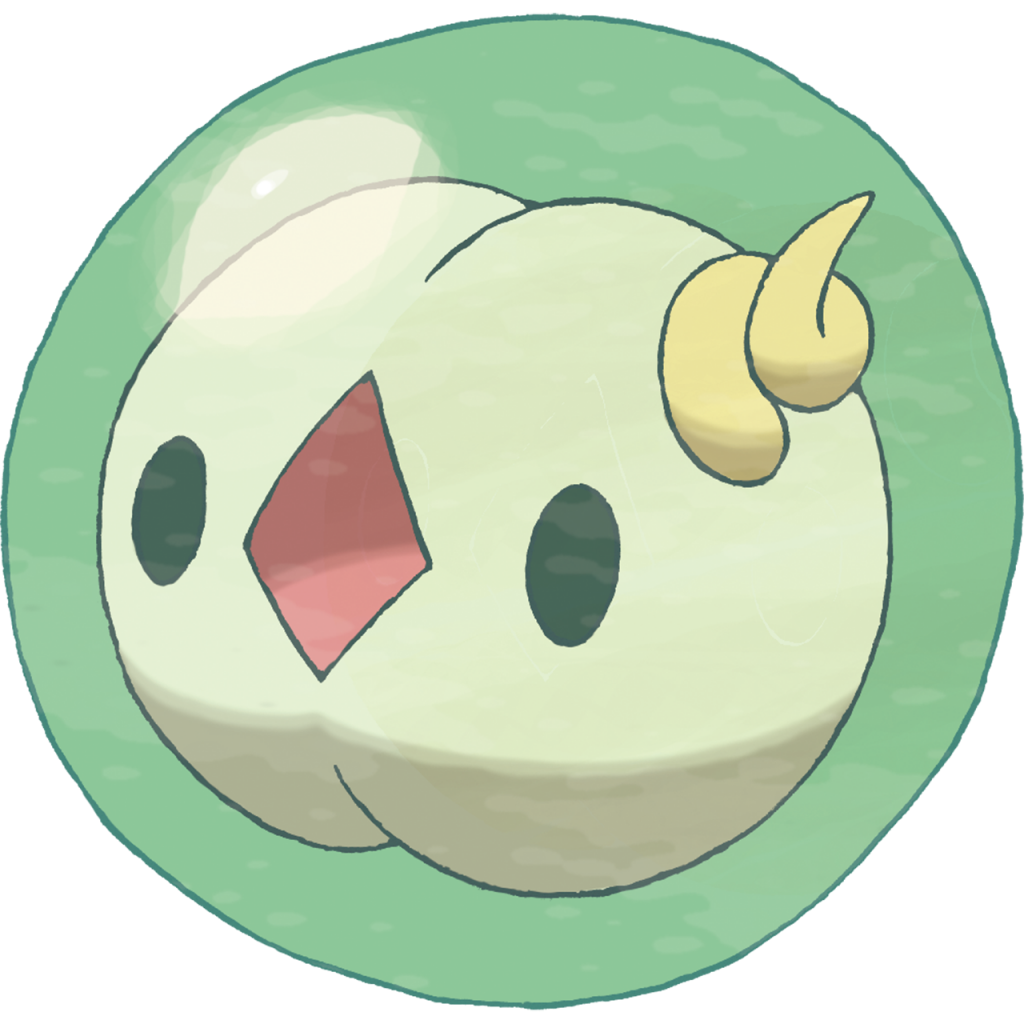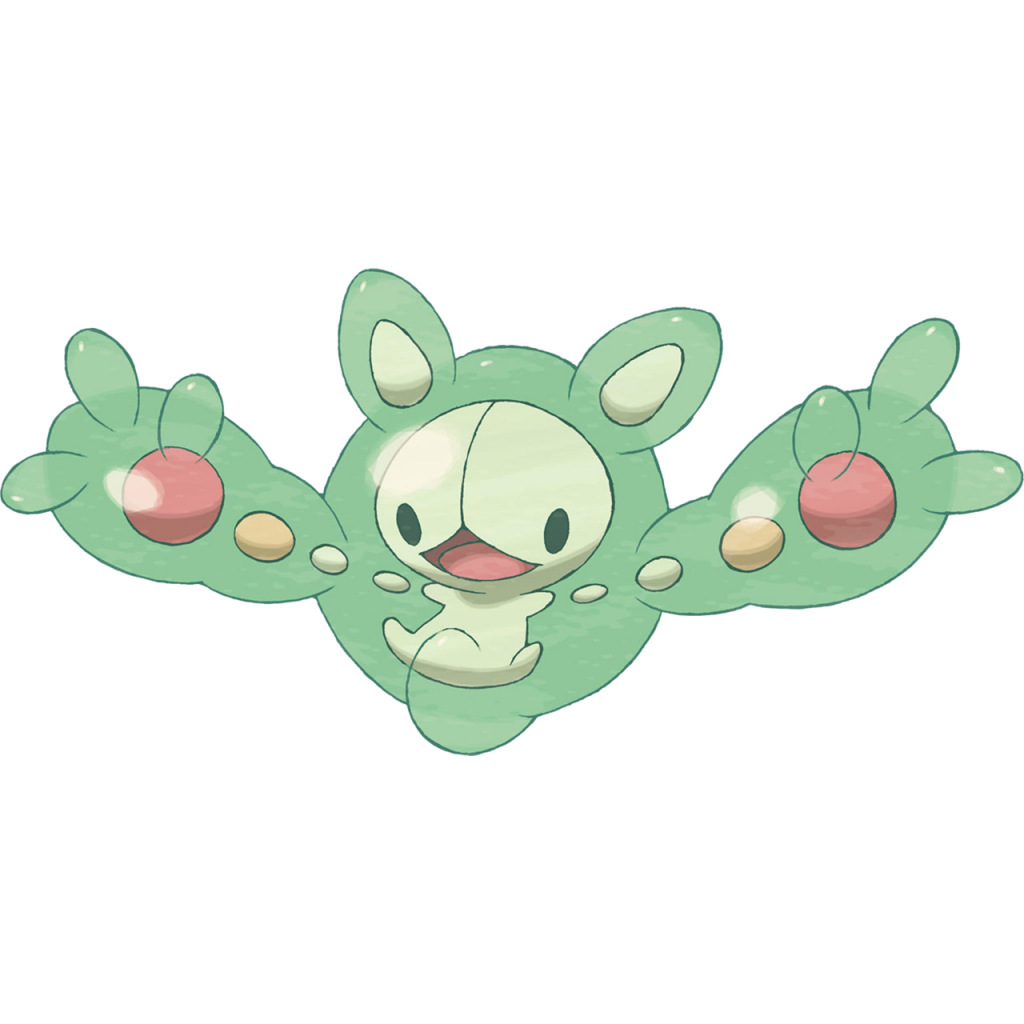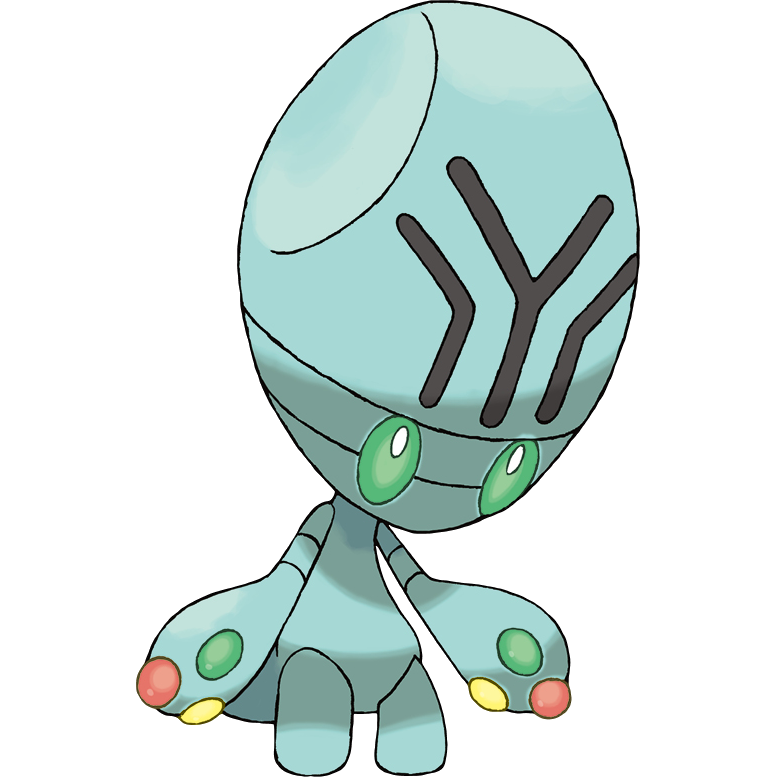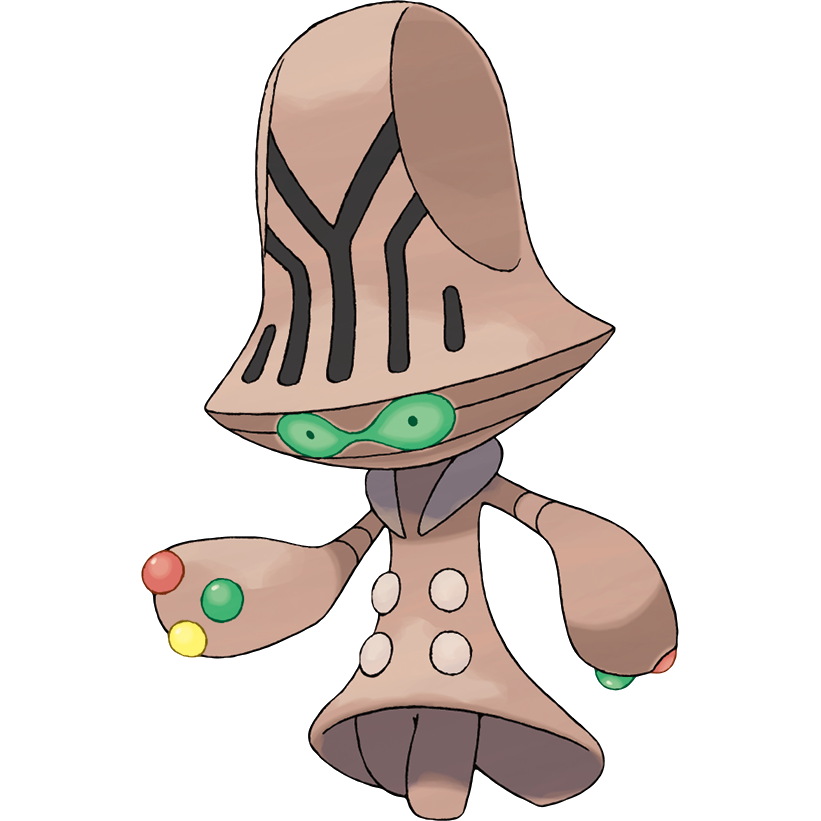I spend a lot of time reading the Pokédex, our in-game source for all kinds of more-or-less believable trivia about every species of Pokémon we’ve ever met. The Pokédex is always useful for learning about new Pokémon of each generation – how they live, what powers they have, and so on – but my favourite entries in the Pokédex are actually ones that tell us something new about the Pokémon we know already.
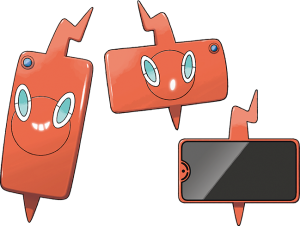
Sun and Moon are maybe the best games in the series so far for these, with all kinds of gems about how Pokémon from other regions have adapted to life in Alola or become part of the region’s culture, but Sword and Shield don’t disappoint either, particularly when looking at Pokémon from generations IV through VII (who’ve accumulated less “screen time” over their shorter lives so far). We’re all excited about the 81 new Pokémon we’ve been getting to know over the past couple of weeks, but I thought it would be nice to take a moment to think about some old friends from earlier games and see how Sword and Shield give us a new perspective on them, especially since some of them are Pokémon that haven’t had much time in the spotlight before. Here are a few of my favourite older-generation Pokémon with interesting new Pokédex entries in Sword and Shield:
Dwebble
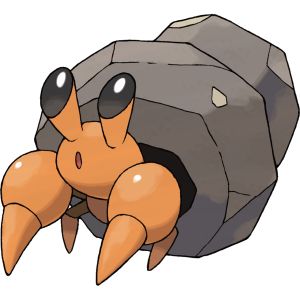
Dwebble’s schtick is that it lives inside hollowed-out rocks, using its acidic saliva to melt holes in the stone and make room for itself, then moving from smaller stones to larger ones as it grows, like a hermit crab. As we learn from the Sword Version Pokédex, though, it’s not just ordinary rocks that Dwebble targets:
“When it finds a stone appealing, it creates a hole inside it and uses it as its home. This Pokémon is the natural enemy of Roggenrola and Rolycoly.”
A gruesome fate for poor Roggenrola and Rolycoly – slowly hollowed out with acid to serve as a shell for some overblown sand-lobster. According to Shield, on the other hand:
“It first tries to find a rock to live in, but if there are no suitable rocks to be found, Dwebble may move in to the ports of a Hippowdon.”
Fortunately, Hippowdon’s entry from Sword shows that this is a more amicable relationship:
“Stones can get stuck in the ports on their bodies. Dwebble help dislodge such stones, so Hippowdon look after these Pokémon.”
Hooray for cleaning symbiosis!
Golurk
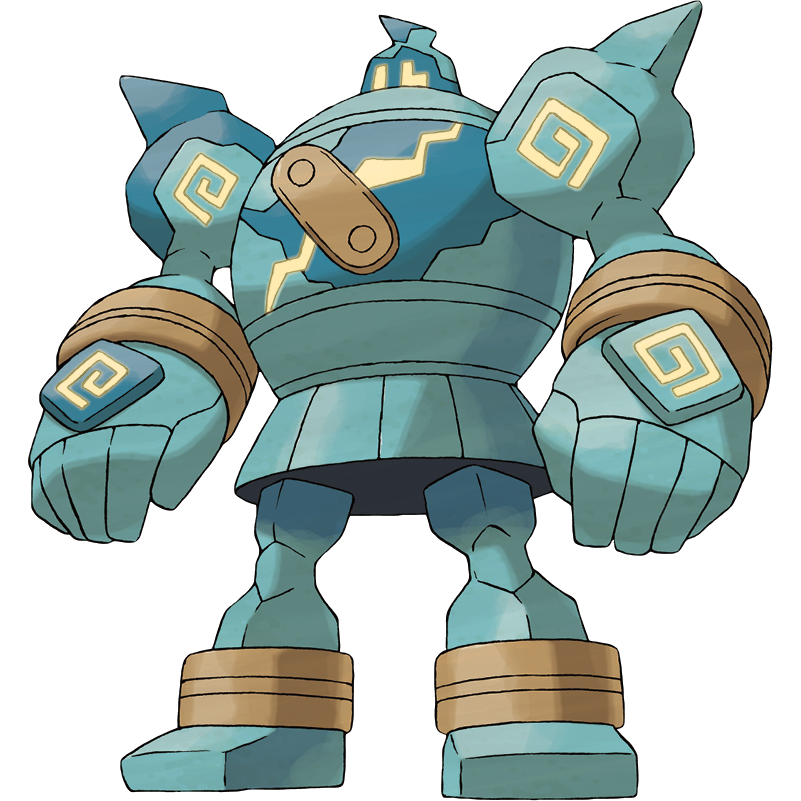
I’m putting in this entry from Sword Version just because I love its image of mediaeval warfare in the Pokémon world:
“Artillery platforms built into the walls of ancient castles served as perches from which Golurk could fire energy beams.”
Strictly speaking this is probably not the best tactical use of Golurk’s capabilities, since Golurk can fly, but come on – a huge clay golem firing laser beams from the battlements of a mediaeval castle? Worth it.
Munna and Musharna
Munna and Musharna were important Pokémon in Black and White because their powers were supposedly related to those games’ Dream World mechanics. Their magical dream smoke can cause dreams to manifest in the real world… but there might be a dark side to that power. From Munna’s entry on Sword Version and Musharna’s on Shield:
“It eats dreams and releases mist. The mist is pink when it’s eating a good dream, and black when it’s eating a nightmare.”
“When dark mists emanate from its body, don’t get too near. If you do, your nightmares will become reality.”
That’s right – the Dream World of Black and White is a happy, fun, peaceful place, but Musharna can make your dreams real whether they’re pleasant or not. If you’re prone to experiencing nightmares, this might be a Pokémon to keep at arm’s length – for everyone’s safety.
Basculin
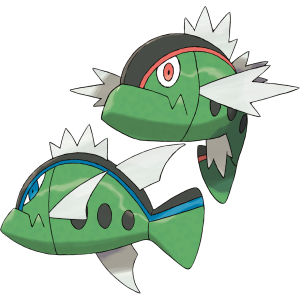
Basculin is… well, Basculin is, let’s be fair, a completely pointless Pokémon that no one loves, and its red- and blue-striped forms serve no purpose except to hate each other forever for no adequately explored reason. Other than the stripe colour, I don’t think we’ve ever been shown any meaningful difference between the two forms at all… until today. According to Shield:
“In the past, it often appeared on the dinner table. The meat of red-striped Basculin is on the fatty side, and it’s more popular with the youth.”
Whereas, according to Sword:
“Blue-striped Basculin used to be a common food source. They apparently have an inoffensive, light flavor.”
So now we know: red Basculin have fattier meat and a stronger flavour, maybe something like salmon or mackerel; blue Basculin are milder and leaner, like cod or orange roughy. I mean, I dunno if that helps if you want to train one, but if you’re here to cook your Pokémon, this is vital information!
(oh yeah, for everyone keeping score at home, that’s another Pokémon that humans definitely explicitly eat – or at least, used to eat in the past)
Pumpkaboo and Gourgeist
Why exactly do Pumpkaboo and Gourgeist come in such widely varying sizes? Apparently, it’s to do with how many lost souls there were in the area where a Pumpkaboo was born:
“Small Pumpkaboo are said to be the product of areas where few lost souls lingered.”
Shield Version’s Pokédex gives variants on this entry for all the different sizes of Pumpkaboo (however, Gourgeist’s entries also point out that Pumpkaboo can “inherit” their size from Gourgeist parents, which is true for in-game breeding). It also turns out, according to Sword, that Pumpkaboo behave differently depending on their size:
“When taking spirits to the afterlife, small Pumpkaboo prefer the spirits of children to those of adults.”
Large Pumpkaboo, likewise, prefer to lead the souls of adults to the afterlife, while average-sized ones appear to have no preference. Super-sized Pumpkaboo, on the other hand, “are very partial to the spirits of people who were of similarly superior proportions,” and I don’t know whether I’m offended that this Pokémon specifically steals the souls of fat people or flattered by the euphemism “superior proportions.” Gourgeist’s Pokédex entries from Sword explain, in the same vein, that large Gourgeist disguise themselves as adults to spirit children away, while small ones disguise themselves as children to deceive adults. Super-sized Gourgeist, on the other hand…
“Supersized Gourgeist aren’t picky. They will forcefully drag anyone off to the afterlife.”
…so don’t think you’ll be safe just because you’ve been dieting.
Solosis and Reuniclus
Solosis, Duosion and Reuniclus are known for two things, in both lore and competitive play: phenomenal psychic power and tremendous survivability. Shield Version has this to say about Solosis:
“Many say that the special liquid covering this Pokémon’s body would allow it to survive in the vacuum of space.”
Here the game is referencing the microorganism that was probably one of the inspirations for Solosis’ design, the tardigrade – a famously weird little creature that is seemingly impervious to heat, cold, starvation, dehydration, radiation and, yes, even the vacuum of space (unfortunately, the tardigrade’s absurd resistances confer little to no protection against just being eaten, but I suppose that’s what the phenomenal psychic powers are for). On the subject of Solosis’ final form, we learn something much weirder:
“It’s said that drinking the liquid surrounding Reuniclus grants wisdom. Problem is, the liquid is highly toxic to anything besides Reuniclus itself.”
So, uh… if you want to become a super-genius and don’t mind cutting your life expectancy to “the next few hours,” this is the Pokémon for you! Maybe get someone else to test it first, though, since I suspect the author of that particular Pokédex entry didn’t bother…
Elgyem and Beheeyem
Elgyem and Beheeyem are pretty clearly based on the Roswell aliens of US conspiracy theories and pop culture; you can tell that just by looking at them. Sword and Shield have some fun with this, using Pokédex entries that invoke common tropes of alien abduction conspiracy theories. Beheeyem’s entry on Sword Version references livestock abduction:
“Whenever a Beheeyem visits a farm, a Dubwool mysteriously disappears.”
Presumably poor Dubwool is taken back to the mothership for mysterious experiments and unpleasant probing. On Shield, we hear:
“Sometimes found drifting above wheat fields, this Pokémon can control the memories of its opponents.”
The wheat fields here are a clear reference to crop circles, the huge circular patterns of flattened wheat or corn plants supposedly created by aliens to serve as messages to humanity. Finally, there’s Elgyem’s Sword entry:
“If this Pokémon stands near a TV, strange scenery will appear on the screen. That scenery is said to be from its home.”
Alien scenery appearing on televisions is not a common conspiracy theory I’ve heard of, but that could be a reference to a famous incident in 1977 when the audio of a TV broadcast in the south of England was hijacked by someone claiming to be an alien representative of the “Ashtar Galactic Command.” Either way, it’s eerie, it’s alien, what’s not to love?
Aegislash
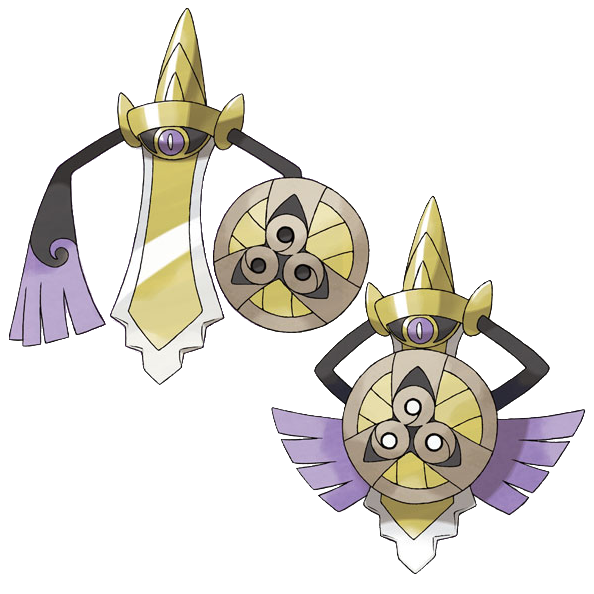
Aegislash seems to have a sinister history in the Galar region, and possibly some kind of relationship with the ancient Galarian monarchy. According to Shield Version’s entry for Aegislash’s Shield form:
“Its potent spectral powers allow it to manipulate others. It once used its powers to force people and Pokémon to build a kingdom to its liking.”
But on the other hand, according to the entry for Aegislash’s Blade form:
“Once upon a time, a king with an Aegislash reigned over the land. His Pokémon eventually drained him of life, and his kingdom fell with him.”
Are these two stories talking about the same kingdom? Did this ancient Aegislash build up an entire kingdom, with a king to serve as its puppet, only to drain his life and abandon the kingdom when it got bored with them? Are there any Ghost Pokémon at all whose backstories aren’t abjectly horrifying?
Type: Null
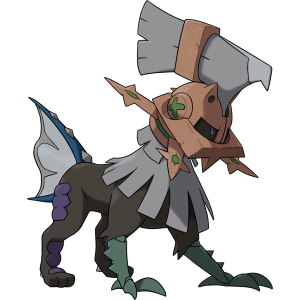
Type: Null, the enigmatic “Beast Killer” Pokémon created by the Aether Foundation to fight Ultra Beasts in Alola, makes an appearance in Sword and Shield too – given to us as a gift by a MacroCosmos employee at the Battle Tower in Wyndon. But what is Null even doing there? Well, according to the Sword Version Pokédex:
“Rumor has it that the theft of top-secret research notes led to a new instance of this Pokémon being created in the Galar region.”
This new Type: Null is the result of full-blown industrial espionage, and it’s not hard to guess who the culprit might be: Chairman Rose, the smooth-talking CEO of half the companies in the Galar region and the former owner of the Battle Tower. As for what he might have wanted it for – well, Type: Null was designed to fight extradimensional Pokémon with powerful “auras.” Might Rose have imagined that its powers would somehow be useful against Dynamaxed Pokémon, or even Eternatus itself? We may never know.
What were you surprised to learn about the Pokémon featured here? What’s your favourite bit of Pokédex trivia? Let us know in the comments, or on our Discord!


